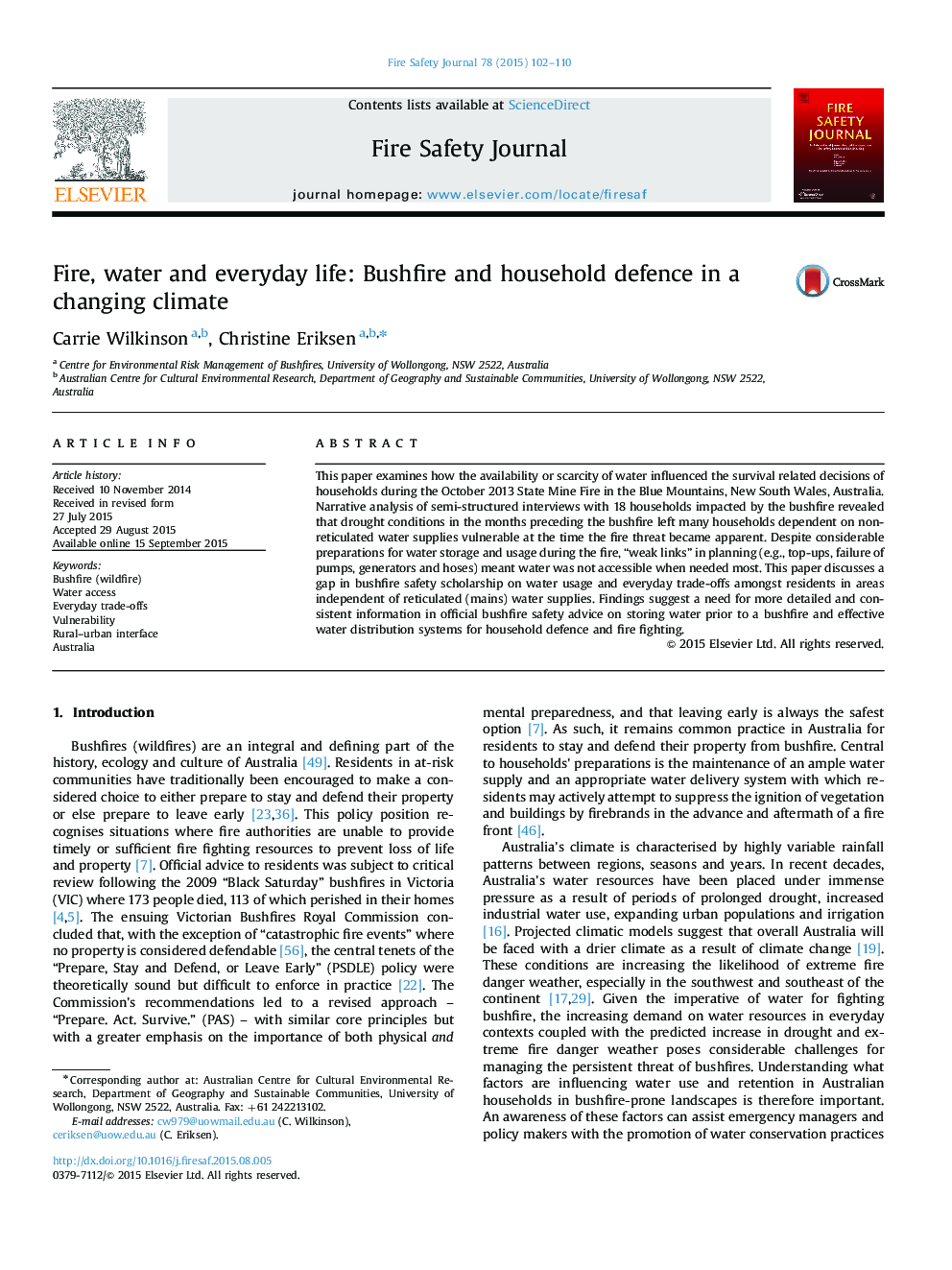| Article ID | Journal | Published Year | Pages | File Type |
|---|---|---|---|---|
| 269734 | Fire Safety Journal | 2015 | 9 Pages |
•We examine two communities impacted by bushfire in New South Wales, Australia.•Households relied solely on non-mains water for both subsistence and fire fighting.•Water shortages and equipment failure impacted survival related decisions.•Planning controls are thorough in their advice on water for bushfire preparedness.•Education material needs more detail on water storage and effective distribution.
This paper examines how the availability or scarcity of water influenced the survival related decisions of households during the October 2013 State Mine Fire in the Blue Mountains, New South Wales, Australia. Narrative analysis of semi-structured interviews with 18 households impacted by the bushfire revealed that drought conditions in the months preceding the bushfire left many households dependent on non-reticulated water supplies vulnerable at the time the fire threat became apparent. Despite considerable preparations for water storage and usage during the fire, “weak links” in planning (e.g., top-ups, failure of pumps, generators and hoses) meant water was not accessible when needed most. This paper discusses a gap in bushfire safety scholarship on water usage and everyday trade-offs amongst residents in areas independent of reticulated (mains) water supplies. Findings suggest a need for more detailed and consistent information in official bushfire safety advice on storing water prior to a bushfire and effective water distribution systems for household defence and fire fighting.
